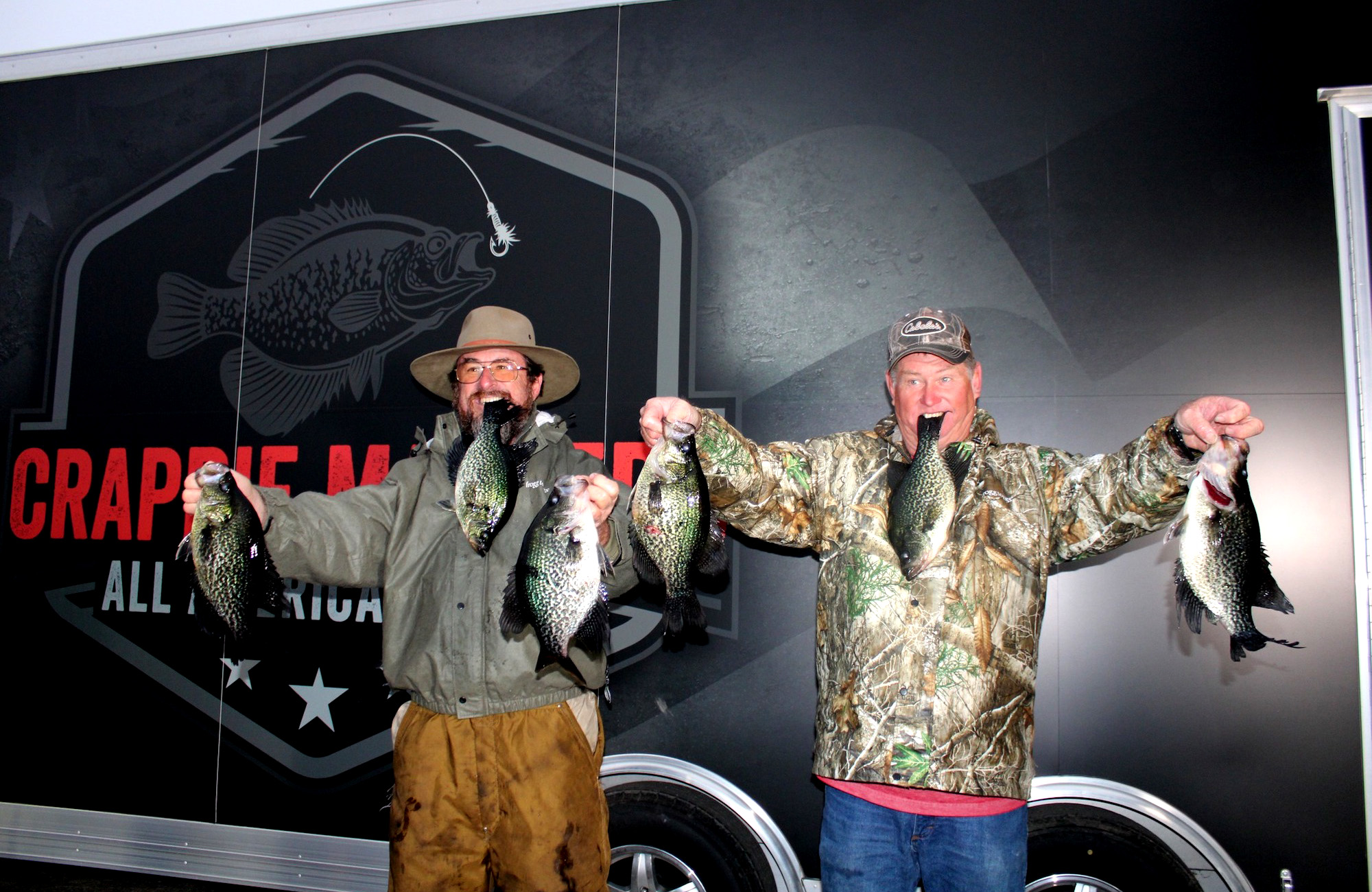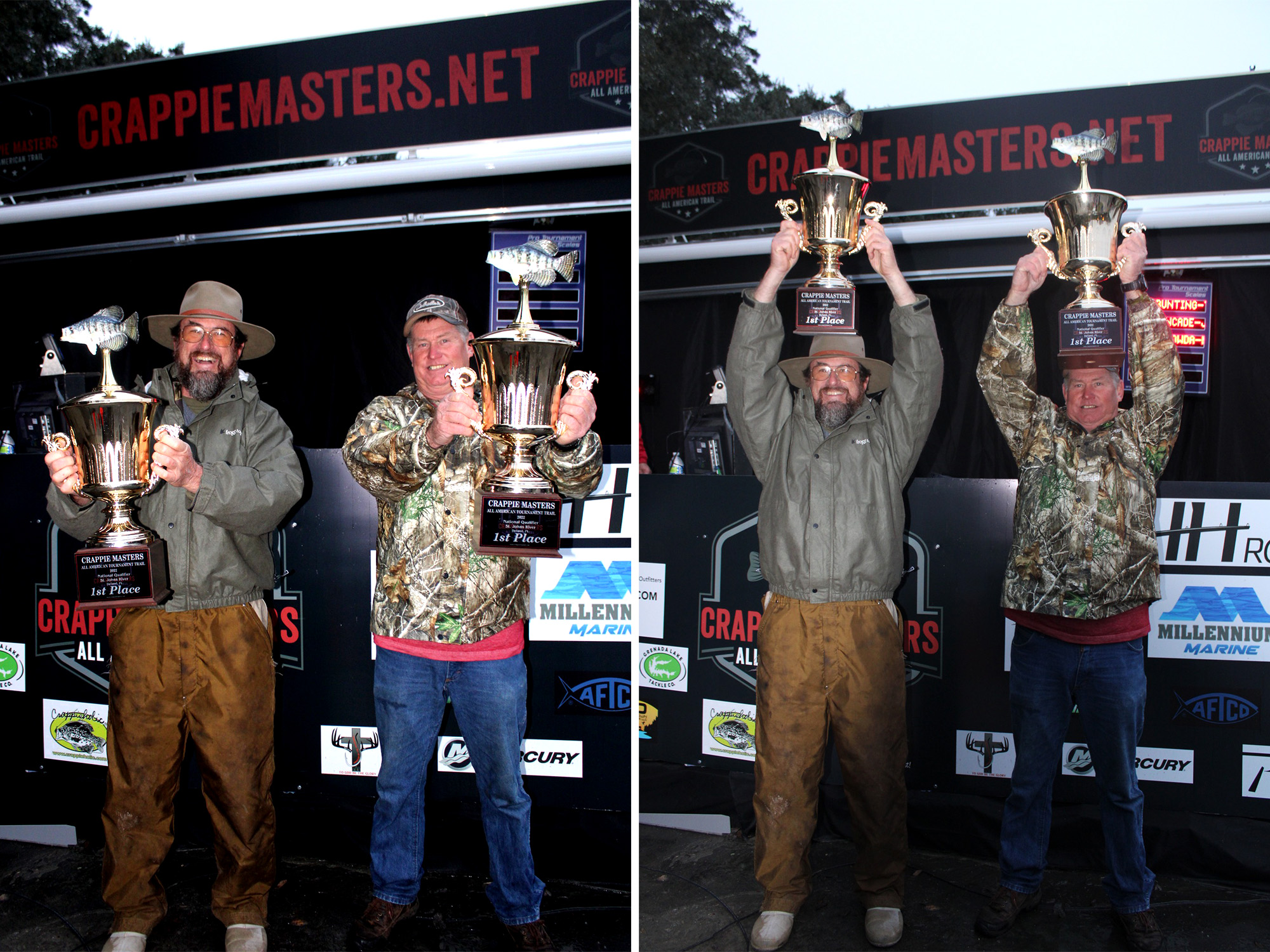Robinson and Stormant were outliers in a field full of high-dollar bass boats and state-of-the-art electronics. Crappie Masters
Last year, a pair of old-school crappie fishermen shocked the professional fishing world by winning a Crappie Masters national qualifying tournament on Florida’s St. Johns River. Randal Stormant and Bobby Robinson, who grew up fishing the St. Johns together, were farther along in years than some of the other competitors. And while the pair had entered a couple of amateur tournaments in the past, neither one had ever fished for a living.
But it wasn’t their age or their inexperience in the pro fishing circuit that made their tournament victory such a surprise. It was how they used cane pole techniques and no electronics to beat out a field of roughly 100 other anglers who were outfitted with the latest and greatest tackle and technology.
The Crappie Masters All American Tournament Trail has since hailed the Stormant-Robinson win as “one of the best crappie tournament stories of [2022].” The tournament organization just released a YouTube video looking back at last January’s St. Johns tournament and the two characters who defied expectations and came out on top.
“We just fished with simple jig poles. There was no depth finder, no GPS, no LiveScope, nothing in the boat. There never is,” Stormant explains in the video. “We fished the same way we’ve been fishing for the last 30 years. We really didn’t do a thing different.”
No Batteries Required
The Garmin LiveScope that Stormant mentions is just one example of a forward-facing (or “live”) sonar device. This technology uses an advanced transducer and a color screen to provide high-resolution, detailed images of what’s in the water. It’s an incredibly powerful tool that allows anglers to not only see underwater structure, but to pick out individual fish and watch them respond to baits in real time.
Read Next: The Best Fish Finders of 2023
Forward-facing sonar has its fair share of critics, who say that staring at a screen eliminates the nuance and skill of reading and learning water. But the pros who fish for a living have always looked to new technology to help maintain an edge over the competition. And the slab-hunting pros on the national crappie fishing circuit are no different.

It’s safe to say that the vast majority of professional anglers competing on the Crappie Masters All American Tournament Trail have forward-facing sonar and state-of-the-art GPS devices installed on their boats. Which helps explain why a few eyebrows were raised at the St. Johns crappie tournament last January, when two old-school crappie fishermen showed up with an older aluminum boat that had no electronics other than a simple trolling motor.
“If we ever figure out how to work them electronics, it might work good for us, but we don’t own none,” says Robinson. “We have jokes about it all the time, and I tell people I’m gonna find a big magnifying glass and put it up on the front. No batteries required.”
Fishing for the Fun of It
In addition to shunning the technology that nearly every other angler in the tournament was relying on, Stormant and Robinson had rudimentary rods that were a far cry from the modern-day spinning combos most anglers use. Without reels or line guides, their 10-foot fly rods were essentially cane poles made of graphite with 10-feet of monofilament line tied to the tips.

Using simple jigs and cork bobbers, they outfished the competition by targeting lily pads and other visible structure on their home river. Stormant and Robinson hauled in a 28.94-pound bag of crappies in two days of fishing. This was enough to best the second-place team by more than a pound, and they took home the $10,000 grand prize at the end of the tournament.
Read Next: How to Fish With a Cane Pole
In doing so, the two fishermen proved that decades of experience and intimate knowledge of a particular water body are often worth much more than a boat full of electronics and high-dollar gear. But if you asked the two today, they’d tell you winning the tournament was never really the goal—and that they weren’t trying to stage an upset or prove a point. They were there because, as Stormant explains near the end of the video, crappie fishing on the St. Johns is still just as fun as it was when they were kids.
